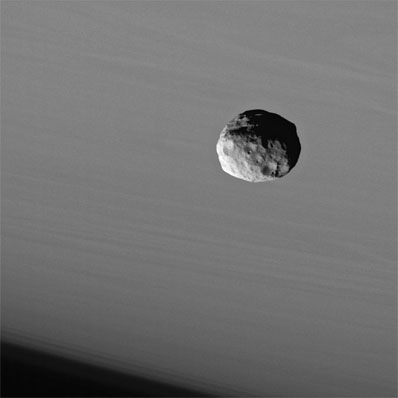
Spaceflight Now +

|

|

|

|

Premium video content for our Spaceflight Now Plus subscribers.

Mars rover seen by orbiter
 Dazzling images from Mars are revealed by scientists. The robotic rover Opportunity has reached the massive Victoria crater with its steep cliffs and layers of rock exposing the planet's geologic history. Meanwhile, the new Mars Reconnaissance Orbiter has photographed the rover and its surroundings from high above. Dazzling images from Mars are revealed by scientists. The robotic rover Opportunity has reached the massive Victoria crater with its steep cliffs and layers of rock exposing the planet's geologic history. Meanwhile, the new Mars Reconnaissance Orbiter has photographed the rover and its surroundings from high above.

 PLAY PLAY

STS-35: Insights into lifestyles of the galaxies
 Loaded with a package of telescopes in its payload bay, shuttle Columbia soared into space for the first ASTRO mission in December 1990. The crew narrates this highlights film from the STS-35 mission in which the astronauts worked around the clock in two shifts to operate the observatory. The flight launched and then landed at night, and included the astronauts teaching from space. Loaded with a package of telescopes in its payload bay, shuttle Columbia soared into space for the first ASTRO mission in December 1990. The crew narrates this highlights film from the STS-35 mission in which the astronauts worked around the clock in two shifts to operate the observatory. The flight launched and then landed at night, and included the astronauts teaching from space.

 Small | Large Small | Large

Hubble discovery
 n this news conference from NASA Headquarters, scientists announce the Hubble Space Telescope's discovery of 16 extrasolar planet candidates orbiting a variety of distant stars in the central region of our Milky Way galaxy. Five of the newly found planets represent a new extreme type of planet not found in any nearby searches. n this news conference from NASA Headquarters, scientists announce the Hubble Space Telescope's discovery of 16 extrasolar planet candidates orbiting a variety of distant stars in the central region of our Milky Way galaxy. Five of the newly found planets represent a new extreme type of planet not found in any nearby searches.

 Small | Large Small | Large

 Become a subscriber Become a subscriber
 More video More video

|

|

|

|
|

|

Superb view of Saturn's Janus
CASSINI PHOTO RELEASE
Posted: October 28, 2006

Credit: NASA/JPL/Space Science Institute
Download larger image version here
|
The Cassini spacecraft provides this dramatic portrait of Janus against the cloud-streaked backdrop of Saturn.
Like many small bodies in the solar system, Janus (181 kilometers, or 113 miles across) is potato-shaped with many craters, and the moon has a surface that looks as though it has been smoothed by some process. Like Pandora and Telesto, Janus may be covered with a mantle of fine dust-sized, icy material.
The image was taken using a spectral filter sensitive to wavelengths of infrared light centered at 930 nanometers. The view was acquired with the Cassini spacecraft narrow-angle camera at a distance of approximately 145,000 kilometers (90,000 miles) from Janus and at a Sun-Janus-spacecraft, or phase, angle of 62 degrees. North on Saturn is up. Image scale is 871 meters (2,858 feet) per pixel.
The Cassini-Huygens mission is a cooperative project of NASA, the European Space Agency and the Italian Space Agency. The Jet Propulsion Laboratory, a division of the California Institute of Technology in Pasadena, manages the mission for NASA's Science Mission Directorate, Washington, D.C. The Cassini orbiter and its two onboard cameras were designed, developed and assembled at JPL. The imaging operations center is based at the Space Science Institute in Boulder, Colo.
|

|

|

|
|



